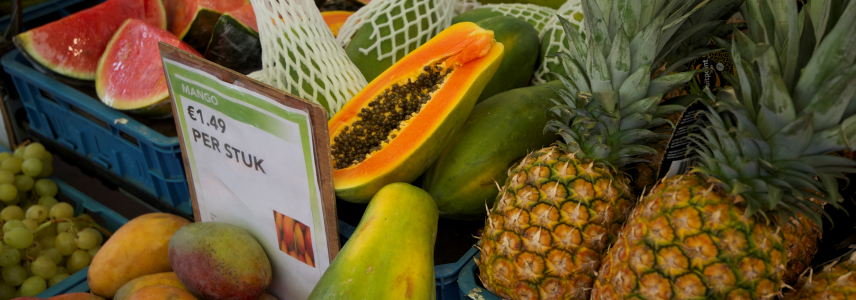Europe continues to import more fresh fruit and vegetables from developing countries

Margins suffered in 2018 due to excessive supply, but the market is recovering in 2019
How will the future look like for fresh fruit and vegetables in Europe? Will there be a profitable market? These questions have been worrying many exporters in developing countries. However, a profitable market is not just about the European consumer demand. Production volumes and product availability can also significantly influence consumption.
Europe continues to increase the total import value of fresh fruit and vegetables from developing countries. These values have actually increased faster than imported product volumes in the past few years. According to statistics, the total import value from developing countries increased 38% in five years, reaching 18.2 billion euros in 2018.
Exotic, more expensive fruit that have become more popular with European consumers in recent years, such as blueberries, avocados, mangoes and pomegranates, all helped push these values higher. Sourcing sustainable fresh products, on the other hand, has also become very complex and time consuming, hence more expensive.
But growing imports not always means a blessing. In reality, 2018 was a disastrous year for the margins of a large number of exporters. It was a good year in terms of production, but prices were much lower than expected, since the market was forced to absorb an excessive supply of tropical and counter-seasonal fruit from countries such as Peru and South Africa.
For example, avocado prices in Europe dropped to as low as 4 to 5 euros a box wholesale in July 2018, when three months earlier they paid 12 to 14 euros. Peru started the season with 40% more volume than normal. South Africa and Colombia had also increased their production significantly, while Kenya struggled with a high volume of small sizes. Continuous supermarket promotions helped to increase consumption in Europe, but low returns turned into an excuse for importers to demand more from suppliers. Unfortunately, avocados was not the only segment facing this issue. Grapes, mandarins, mangoes, limes and other types of fruit experienced substantial price drops.
The fruit trade is expected to go back to normal in 2019. But trade history has the habit of repeating itself, so the 2018 excesses can be expected again in the near future. The CBI studies Market Statistics and Outlook and Trends provide further insights into the European market for fresh fruit and vegetables and valuable information on how to prepare for difficult market conditions. Important trading elements, such as understanding market dynamics and making sure you are among the best suppliers by providing high-quality products, excellent post-harvest and simply having good timing, can all make a difference in difficult times.
To stay up-to-date on the latest developments in fresh fruit and vegetables, subscribe to CBI’s newsletter via the following link: subscribe to our newsletter.